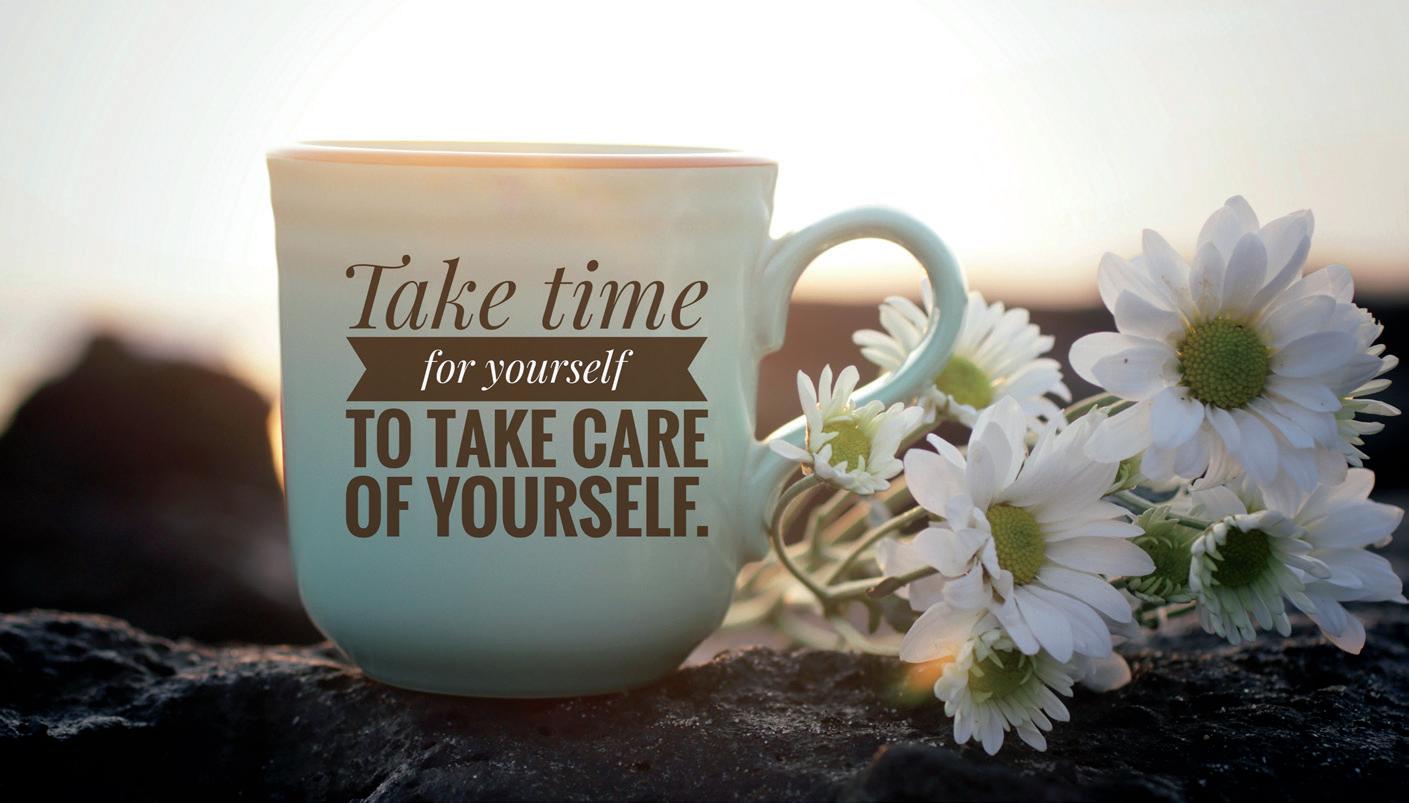
4 minute read
Self-Care: Wellness for Educators and School Staff
Wellness for Educators and School Staff
By Amanda Sellers, School Climate Specialist, OSDE
Educator, you are essential! The work you are doing changes lives, shapes the future, and nourishes others' wellbeing. Take time to care for you.
Is "self-care" a new buzz word or is it one more item to add on the "to do" list? Both are valid thoughts. I encourage you to pause and take time to unpack your feelings and thoughts around prioritizing your wellness.
First, let's tackle a few myths attached to the term "self-care."
■ Self-care should not make a person feel guilty, selfish, or more overwhelmed.
■ It's neither selfish, greedy, nor indulgent to prioritize your mental, physical, social and emotional wellness.
■ Don't mistake unhealthy coping habits for self-care. True wellness and self-care are not harmful but positive actions towards wellness
■ You can access more details about self-care, including a list of ways to try to create balance here: Self-Care for Teachers and Educational Professionals, 2020.
Self-care is the practice of taking an active role in protecting your wellbeing and happiness, in particular, during periods of stress.
Educator and school staff stress level and mental health can lead to negative interactions with students, resulting in more punitive responses, lower engagement, and lack of social-emotional support for students. Educator wellness directly correlates with student wellness and is a primary factor in creating a healthy school climate USDE, 2021. Research indicates “stress contagion” can occur in classrooms where teachers report feelings of exhaustion and burnout, which connects with students experiencing higher cortisol levels in these classes National Education Association, 2016. Elevated cortisol can lead to more fight, flight, and freeze responses among students.
An essential part of a trauma informed school system is recognizing the signs of secondary traumatic stress (STS) and related conditions that show up in daily interactions amongst members of the school community. Recognizing your own signs of distress and assessing your level of self wellness is the first step in caring for you and your students.
SECONDARY TRAUMATIC STRESS
(STS) is the psychological distress that occurs after hearing about the traumatic experiences of others, it can occur following the traumatic event, seeing images related to the trauma or having to retell a student’s story Secondary Stress and Self Care.
■ Feeling detached from students
■ Feeling powerless on how to help students
■ Intrusive thoughts about the traumatic event
Prioritize you — you are worth it!
COMPASSION FATIGUE Is the emotional and physical burden created in caring for others. It can result from secondary/vicarious traumatic stress, and it often results in the caregiver losing interest or having a reduced capacity of empathy for others (Figley, 1995)
■ Hypervigilance or Minimizing
■ Anger and Avoidance
■ Addiction and Poor Boundaries
PROFESSIONAL BURNOUT is an extreme form of chronic stress that can lead to physical and emotional exhaustion with behaviors that result in cynicism and detachment along with feelings of ineffectiveness.
■ Constantly overwhelmed or feeling numb
■ Negative attitude toward others
■ Loss of professional boundaries and ethics
Personal wellness is multidimensional and may include physical, mental, social, professional, and spiritual health. Each area functions in tandem, meaning these dimensions do not occur in isolation. Healthy educators benefit the school climate by increasing positive interactions among students, co-workers, families, and increasing employee attendance and workplace satisfaction. (Lever et al., 2017; USDE, 2021)

SELF-CARE AND WELLNESS
BENEFITS
■ Increased life satisfaction and happiness
■ Ability to gain perspective and balance
■ Modeling of healthy coping for children
■ Fostering a sense of control
■ Facilitating recovery
STRATEGIES
■ Engage in self-reflection
■ Set boundaries with work, media, and family
■ Stay connected with support systems.
■ Practice good nutrition, sleep, and movement routines
■ Be present and practice mindfulness
■ Practice gratitude daily
■ Feel proud of the work you are doing
Adapted from Goga & Olinger, 2020, Boogren & Kanold, and National Association of Social Workers, 2021.
References and Resources
Boogren, T. & Kanold, T. (2021). Educator Wellness: A Guide for Sustaining Mental, Physical, Social and Emotional Wellbeing. Solution Tree.
Figley, C.R. (1995). Compassion fatigue as secondary traumatic stress disorder: An overview. In C.R. Figley (Ed.), Compassion fatigue: Coping with secondary traumatic stress disorder in those who treat the traumatized (pp. 1–20). Brunner-Routledge.
Goga, T. & Olinger, E. (2020). Self-Care for Teachers and Educational Professionals. Oklahoma State Department of Education, Student Support.
Lever, N ., Mathis, E., & Mayworm, A. (2017). School mental health is not just for students: Why teacher and school staff wellness matters. Report of Emotional and Behavioral Disorders in Youth, 17(1): 6–12. https:// www.ncbi.nlm.nih.gov/pmc/articles/ PMC6350815/
Sellers, A (2021) Self-Care for Teachers and Educators Training. Oklahoma State Department of Education, Student Support.
National Association of Social Workers (2021). Self-Care for Social Workers.
U.S. Department of Education, Office of Special Education and Rehabilitative Services. (2021). Supporting Child and Student Social, Emotional, Behavioral, and Mental Health Needs. https://www2.ed.gov/ documents/students/supporting-childstudent-social-emotional-behavioralmental-health.pdf
Walker, T. (2016). Is Stress in the Classroom Contagious? National Education Association.
https://www.nea.org/advocating-forchange/new-from-nea/stress-classroomcontagious










